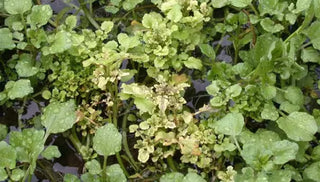Stunting and deformed growth of young plants are typical symptoms of aster yellows. This disease is caused by a bacterialike organism called a phytoplasma, and it can infect a wide range of plants. Leaves may also turn yellow and twist into a rosette, or plants may produce abnormal bushy growth such as witches? broom.
Aster yellows is transmitted from plant to plant by leafhoppers. The phytoplasma overwinters in perennial weeds, such as dandelion, plantain, and wild carrot. In early spring, leafhoppers begin feeding on these weeds and then transmit the infection to garden plants. Once infected with aster yellows, plants can?t be cured.
Prevention and Control
- Minimize the opportunity for infection by mowing or removing weeds from around your garden.
- Cover vulnerable crops with garden fabric to prevent leafhoppers from feeding on your plants.
- Uproot and destroy infected plants.





